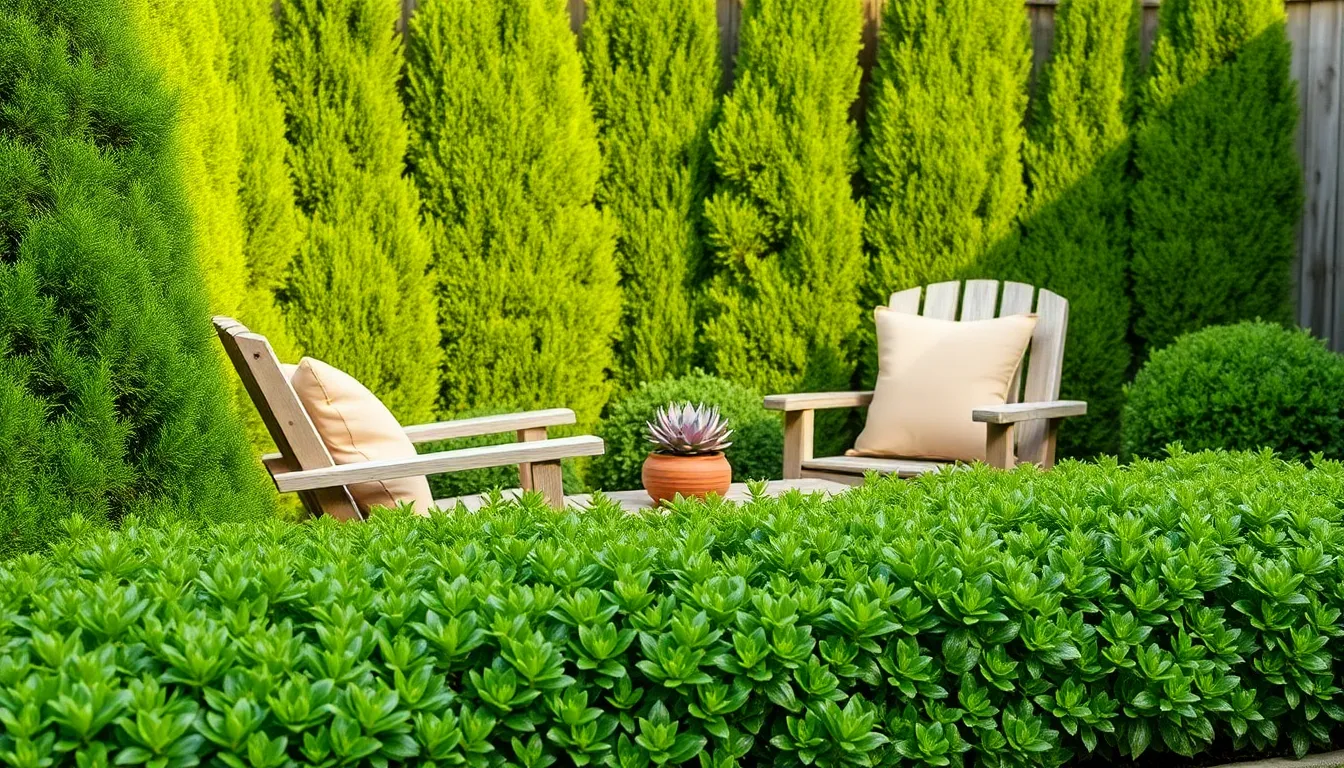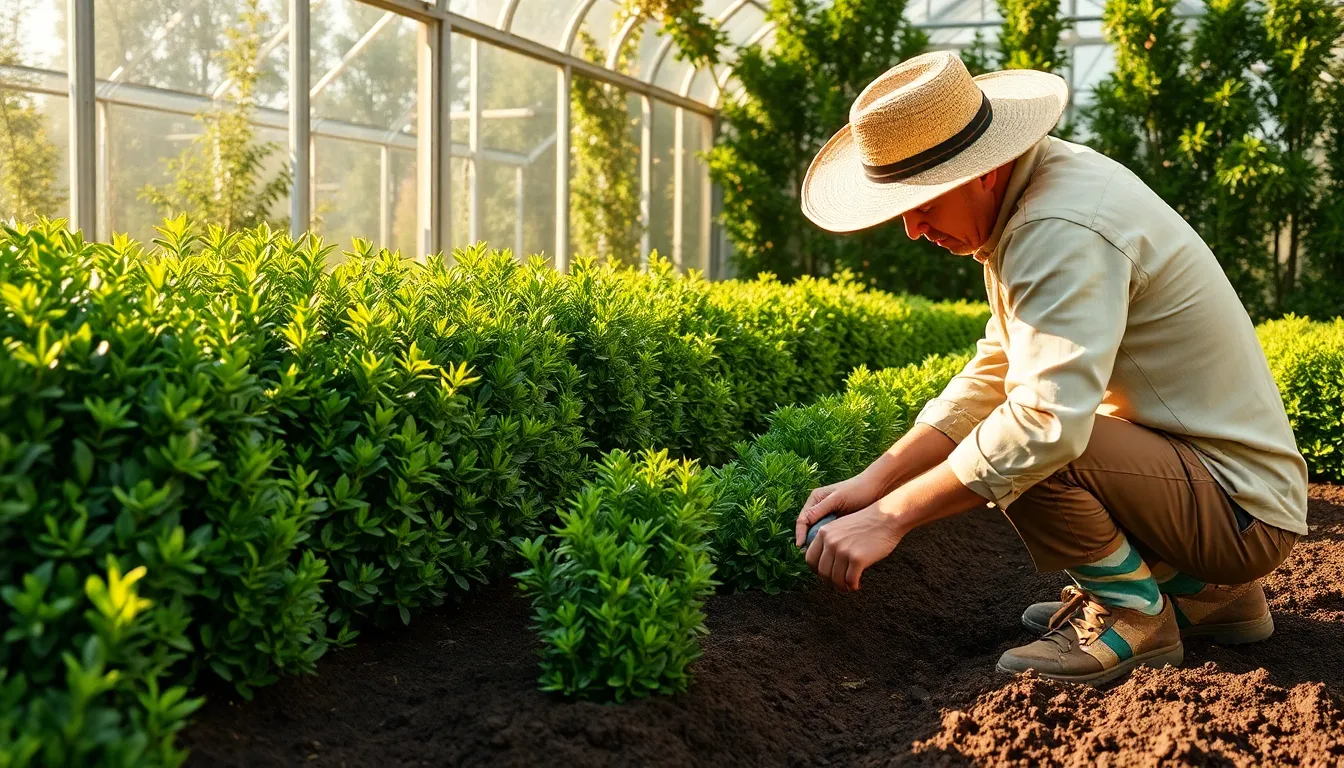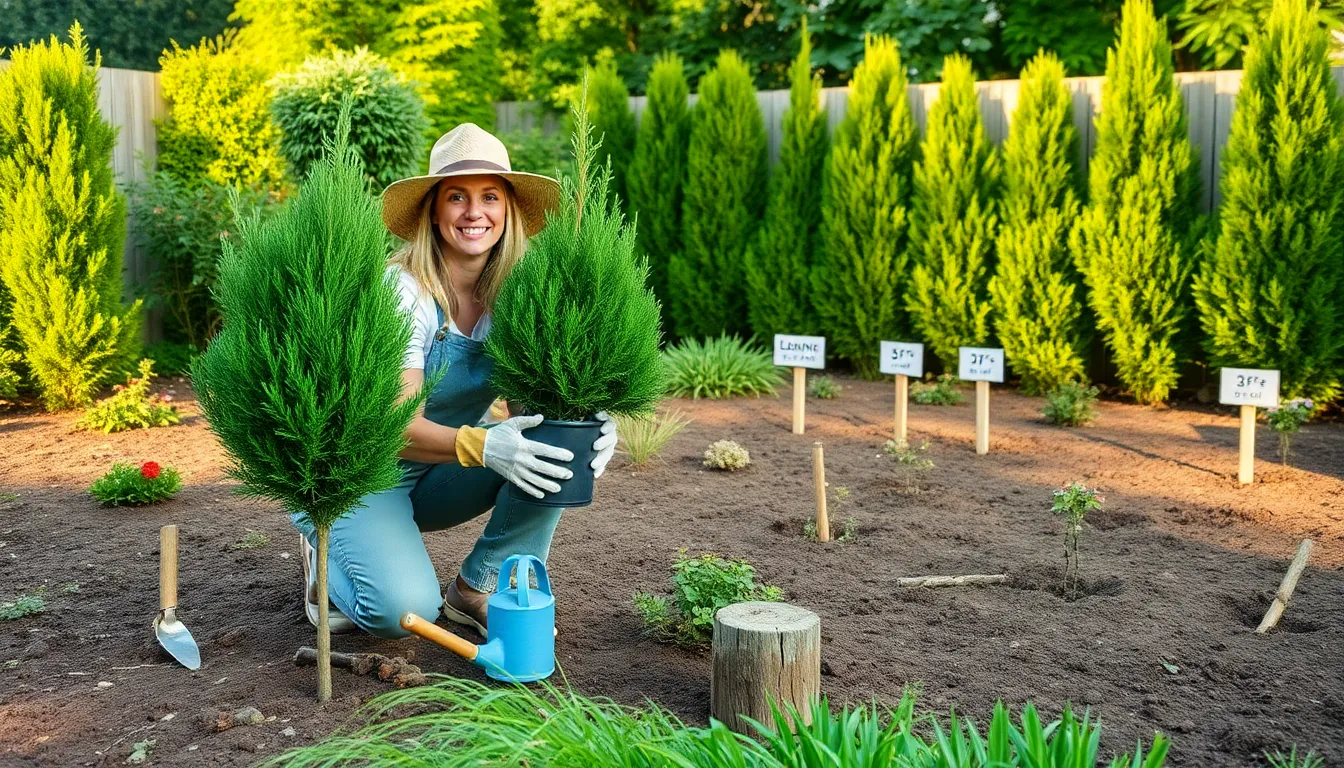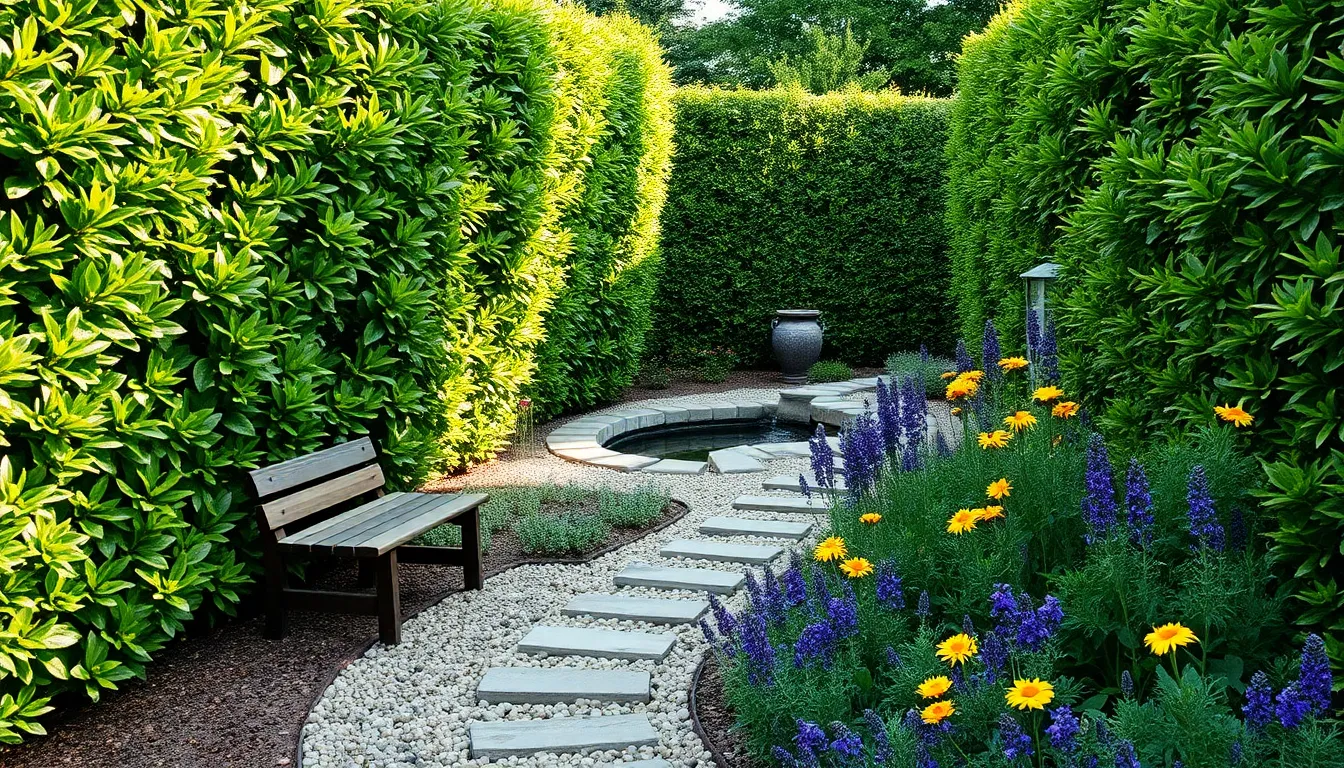Ever thought about transforming your outdoor space into a serene sanctuary, shielded from prying eyes? Planting a hedge for privacy not only enhances the aesthetics of your garden but also serves as a natural barrier, creating an intimate haven that feels like a personal retreat. Whether you’re a novice just starting to dig into the world of gardening or a seasoned green thumb looking for a new project, crafting a living fence can offer an enriching challenge with lush rewards.
Privacy hedges are more than just a protective shield; they are a testament to the harmony between functionality and beauty in garden design. In this guide, we’ll explore the essentials of selecting the right plants, understanding their growth habits, and mastering the art of planting and maintenance. By the end of this journey, you’ll be equipped with the knowledge to choose the perfect hedge that suits your climate, complements your garden style, and meets your privacy needs.
From evergreens that stand tall through the seasons to flowering shrubs that add a burst of color, the possibilities for creating your green barrier are as diverse as they are exciting. We’ll delve into expert tips on how to nurture your hedge from a row of hopeful saplings to a thriving, verdant wall. So, grab your gardening gloves and get ready to embark on a fulfilling adventure that promises both immediate satisfaction and lasting privacy.
Choosing the Ideal Hedge Species

When selecting hedge species for privacy, it’s crucial to consider the specific climatic conditions of your region. Native plants are often a smart choice because they are naturally adapted to the local environment and require less maintenance.
Consider the desired height and density of your hedge to ensure it meets your privacy needs. For a lush, dense hedge, plants like boxwood or privet are excellent options due to their consistent growth patterns and ability to be trimmed to a precise shape.
Soil type is another key factor when choosing your hedge species. Plants such as laurel bushes thrive in well-draining soil, so if your garden tends to retain water, consider adding organic matter like compost to improve drainage.
For those in colder climates, species like the arborvitae are hardy and can withstand harsh winters while still providing year-round privacy. Ensure these evergreens receive adequate sunlight and are watered regularly, especially during dry spells, to maintain their lush appearance.
Designing Your Privacy Hedge Layout

Creating a privacy hedge involves thoughtful planning to ensure it effectively serves its purpose. Begin by determining the length and height you need your hedge to be, as this will influence your choice of plant species and spacing.
Consider the mature size of the plants you have chosen, as overcrowding can lead to poor growth and health. Spacing your plants appropriately, usually about half their expected mature width apart, ensures healthy growth and optimal coverage.
It’s crucial to prepare the soil well before planting your hedge. Loosen the soil to a depth of about 12 inches and mix in organic compost to improve drainage and provide nutrients.
While planting, dig holes deep enough to cover the root ball but not so deep that the plant’s crown is buried. Water the plants thoroughly after planting and apply a layer of mulch to help retain moisture and suppress weeds.
For a more advanced approach, consider staggering your plants in a zigzag pattern rather than a straight line. This technique provides denser coverage and a more natural appearance.
Regular maintenance, such as pruning, is essential to keep your hedge in shape and encourage dense growth. Use sharp, clean tools to avoid damaging the plants and prune during the dormant season for best results.
Preparing Soil for Optimal Growth

When preparing soil for your privacy hedge, it’s crucial to start by assessing the current soil conditions in your garden. Conduct a simple soil test to determine the pH level and nutrient content, which will guide you in making the necessary amendments for optimal plant growth.
Amending the soil is an essential step to create a fertile environment for your hedge plants. If your soil is heavy clay, consider adding organic matter such as compost or well-rotted manure to improve drainage and aeration.
For sandy soils, incorporate organic matter to enhance moisture retention and provide essential nutrients. Regularly mulching around the base of the plants will further help in maintaining soil moisture and suppressing weeds.
Consider using a balanced, slow-release fertilizer to give your hedge a strong start. Apply it according to the package instructions, usually in early spring and again in late summer, to support healthy growth and lush foliage.
Advanced gardeners may also want to consider the benefits of companion planting to enhance the growth and health of their privacy hedge. Planting nitrogen-fixing plants nearby can naturally improve soil fertility and reduce the need for chemical fertilizers.
Planting Techniques for Dense Coverage
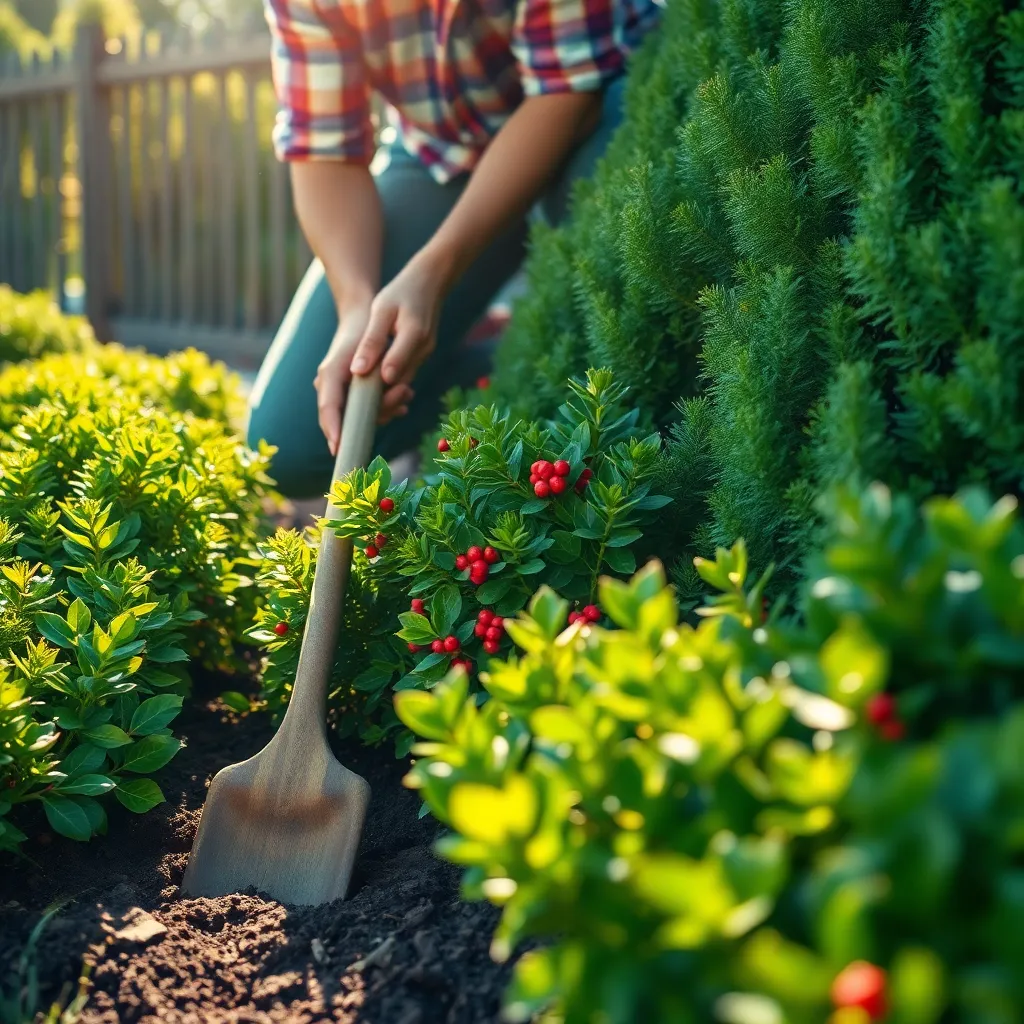
To achieve dense coverage when planting a hedge for privacy, spacing is crucial. Begin by determining the mature width of the plants you choose, and plant them at half this width to ensure they grow into each other.
When planning your hedge, consider staggering the plants in a zigzag pattern rather than a straight line. This technique not only provides fuller coverage but also allows for better air circulation, reducing the risk of disease.
Soil quality directly impacts plant density, so enrich your planting area with organic matter like compost or well-rotted manure. This enhances soil fertility and structure, promoting robust root growth and healthier plants.
Watering newly planted hedges is vital; ensure consistent moisture during the first few seasons to establish strong roots. A deep soaking once a week is typically sufficient, but adjust based on rainfall and soil type to prevent waterlogging.
Advanced gardeners can consider incorporating companion planting to naturally deter pests and enhance growth. For example, interplanting with species that attract beneficial insects can reduce the need for chemical interventions, promoting a healthier hedge.
Maintenance Tips for Lasting Privacy

To maintain a healthy hedge for privacy, regular pruning is essential. Pruning promotes dense growth, ensuring your hedge remains thick and impenetrable.
Begin by trimming the hedge in early spring and again in late summer. This timing helps the plants recover quickly and encourages vigorous growth.
When pruning, always use sharp, clean tools to prevent disease spread. Trim the sides slightly more than the top to allow sunlight to reach all parts of the hedge, promoting uniform growth.
Watering is another crucial aspect of hedge maintenance. Hedges generally require deep watering once a week during dry periods to establish strong roots.
Consider installing a drip irrigation system for larger hedges to ensure even moisture distribution. Avoid overwatering, as this can lead to root rot and other plant diseases.
Fertilization keeps your hedge thriving and vibrant. Use a balanced, slow-release fertilizer in early spring to support new growth and again in late summer to prepare the plants for winter.
Apply the fertilizer evenly along the base of the hedge, and water thoroughly after application. This encourages nutrient absorption and helps prevent nutrient runoff.
Lastly, maintain a clean and weed-free base around your hedge. Mulching with organic material can suppress weeds and conserve soil moisture, benefiting the hedge’s health.
Regularly inspect your hedge for pests and diseases, addressing any issues promptly. This proactive approach ensures your hedge remains a robust and lasting privacy barrier.
Conclusion: Growing Success with These Plants
In exploring ‘Plant A Hedge For Privacy,’ we delved into five key relationship concepts: the importance of establishing boundaries, the nurturing power of consistent communication, the benefits of shared growth, the necessity of mutual respect, and the role of personal space in fostering intimacy. These elements, much like a well-tended hedge, create a sturdy foundation for a thriving relationship. As your immediate next step, take a moment to discuss with your partner or loved ones how you can collectively strengthen these areas, perhaps by setting aside dedicated time for each other or reassessing the balance between togetherness and individuality.
As you embark on this journey to foster deeper connections, remember to save this article for future reference; it serves as a valuable resource to revisit whenever you need guidance in maintaining your relational hedge. By doing so, you empower yourself with the knowledge and tools to nurture robust, lasting relationships. Looking ahead, envision a future where your relationships not only survive but flourish, rooted in understanding, communication, and respect. Together, let’s cultivate connections that stand the test of time. Bookmark this page, and let it be your companion on the path to relationship success.

